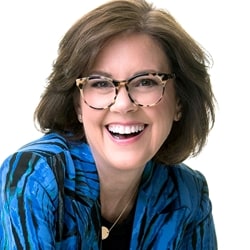This post is a guest post by Sam Rosen, CEO of ThoughtLead.
On Tuesday, July 6, my company is putting on “the shortest marketing conference ever.” It’s called the Influencer Project, and it features new media luminaries like MarketingProfs' own Ann Handley, Guy Kawasaki, Robert Scoble, Gary Vaynerchuk, John Jantsch, Anne Holland, David Meerman Scott, Brian Clark, and many others—60 in total.
Inquiring minds have wanted to know how we got so many “influencers” on board. Well, it has something to do with the fact that each only has 60 seconds to speak. Let me explain.
As my team and I thought through what made our pitch “work,” and why so many “A-listers” agreed to participate, we came up with five not-so-obvious principles that you can start putting into practice immediately.
Without any further ado, here they are:
1. Create a “meme.” What’s a meme? In its simplest form, a meme is simply an idea that can spread from person to person. Whereas “genes” are passed on at the biological level, “memes” propagate on the cultural level. Okay—enough jargon. What does that actually mean?
I Can Has Cheezburger is a meme. Lady Gaga is a meme. Sh*t My Dad Says is a meme.
“A virtual marketing conference” is not a meme. “The shortest marketing conference ever” is. So “15 hour-long webinars“ is not a meme, but “60 talks in 60 minutes” is. That’s not to say that general marketing conferences aren’t great, important, and incredibly valuable. But they’re not necessarily memes.
A meme takes a simple convention (marketing conferences; teen pop stars; sage advice) and turns it on its head (“shortest marketing conference ever”; the most outrageous and over-the-top teen pop star in history; ridiculous, profane, and hilarious sage advice) in a way that’s surprising, eye-catching, and even remarkable (“60 in-demand leaders speaking for 60 seconds each”; theatrics and imagery that’s uniquely, err, creative and boundary-pushing; hilarity delivered in 140 characters).
- So: are you creating a meme, or more of the same?
2. Offer disarmingly low barriers to entry (and, ideally, make it fun). If you think you have a meme that will excite people—all celebrities are human, and get excited by the exact same things we do, after all—but it requires tremendous effort (and you don’t have tremendous money to pay for their time, or a massive social cause to champion), then, sir or madam, good luck.
If I had asked each speaker to talk for one hour about [insert generalized topic here], I would have surely gotten turned down by many, if not most, of the speakers. But all I asked for was 60 seconds. That’s not just disarmingly simple to cognize—it also presents a fun and intriguing challenge.
- So: how big are your barriers to entry? Are the “asks” you’re making eye-rolling, or thrilling?
3. Construct a collective ethos. 60 speakers is a project. It’s not “me” speaking at “some thing”—it’s all of us doing something together. TED represents 1,000 leaders coming together to explore the edge of what’s next—and millions of people watching the videos afterward. It unites people, and it’s about our future.
None of us, deep down inside, wants to be a lone ranger. Celebrities and thought leaders have strong individual presences—but who, honestly, wants to walk the path alone? When you build a forum for many people to share ideas that matter, you release an energy that’s unparalleled. MarketingProfs does this beautifully: everyone is blogging, chatting, and working together—not alone.
- So: is the meme you’re creating making influencers feel part of something, or all on their own?
4. Make your language repeatable and surprising, but meaningful. It’s really, really easy to come up with a generalized description of virtually anything. But that won’t light people up. We like things we can repeat, that roll off our tongues with ease.
“60 speakers in 60 minutes.” “60-in-60.” In this case, I used numerical repetition to make the language “stick.” Now, and here’s the rub, there’s also significance behind the numbers: they represent the fact that many leading thinkers and doers—a surprising 60—will all be sharing something remarkable in 60 seconds each.
“Purple Cow” is both surprising and repeatable—but it represents an idea that can transform your business. “The Art of the Start” also has an incredibly rhythmic quality, but it’s coming from one of the most respected startup advisers in the country.
- So: is your language repeatable, surprising, and meaningful—or are you either too bland or going for shock value without offering meaning?
5. Write the right letter. There’s an interesting phenomenon that can occur when we reach out to the influencers: we either err on the side of long-winded, involved, overly deferential (two-page letters describing our event in painstaking detail and why it would be our deepest honor to have the person involved), or communicating beyond our pay grade (“Hey bro, you down to do an interview tomorrow?” Unless, of course, it is your brother.).
What we’re shooting for is the line right down the middle. That means writing brief and collegial emails (none of ours were longer than 12 sentences), but still informative (none were less than 6 sentences, and all included the most important details).
- So: are you writing friendly, informative, and succinct invitations—or are you erring on either too stiff and long-winded or too short and “buddy buddy”?
There you have it: 5 principles that can get the web celebs on board and increase your brand visibility online. Spark any ideas for your own brand?
------------------------------------------
Sam Rosen is the CEO of ThoughtLead in Lenox, Massachusetts, organizer of the Influencer Project.




